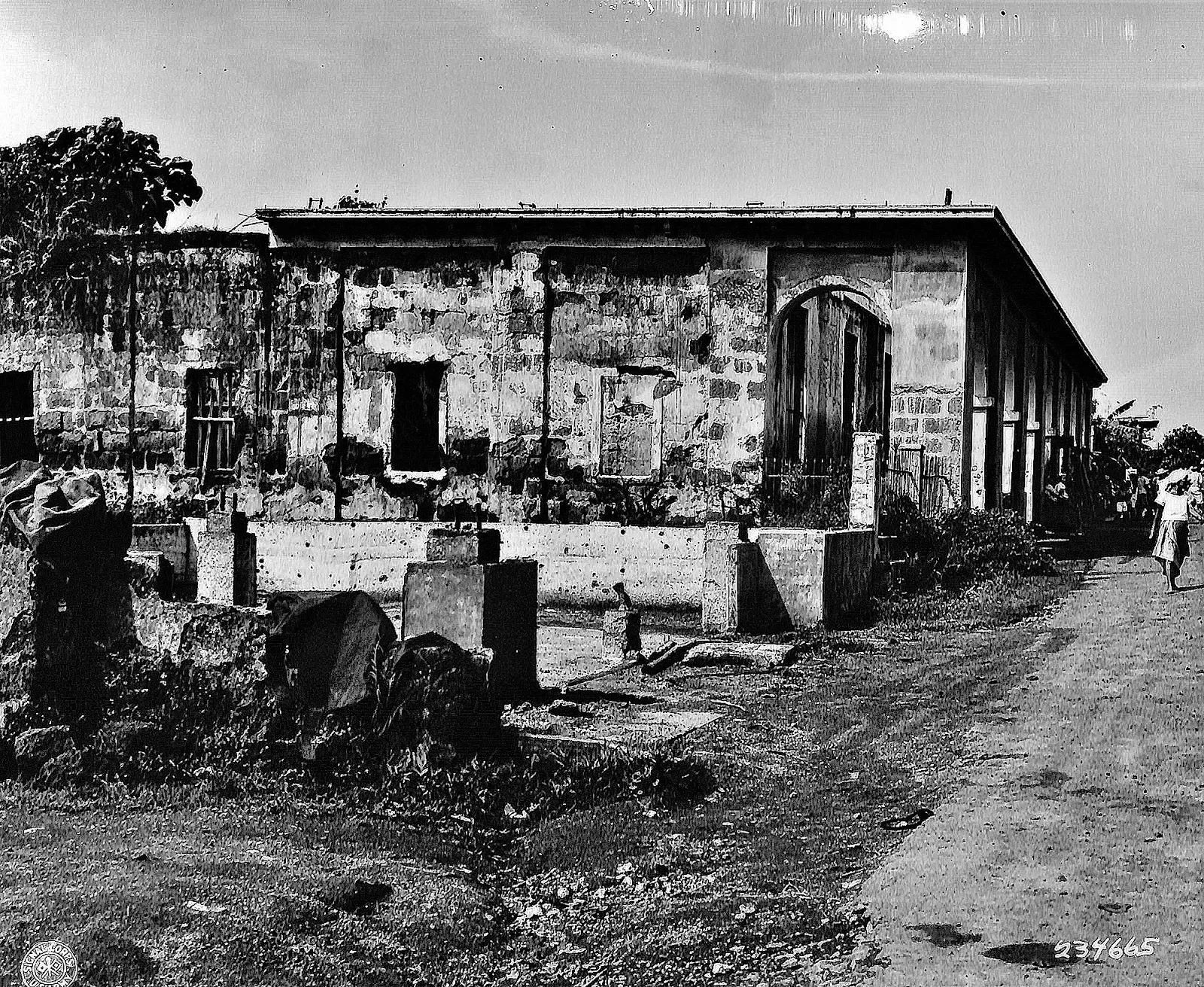Testimony of Melchor Mendoza of San Jose, Batangas on Japanese Atrocities at Bo. Lapulapu II in 1945
[TRANSCRIPTION]
This page contains the testimony of one Melchor Mendoza of San Jose, Batangas on the burning of houses and other atrocities committed by the Japanese in Barrio Lapulapu II in 1945. The pages contained herein are now declassified and were part of compiled documentation1 of war crimes trials conducted by the United States Military Commission after the conclusion of World War II. Most of the testimonies were translated from Tagalog and have been corrected for grammar by Batangas History, Culture and Folklore where possible. The pagination is as it was contained in the original document for citation purposes.
[p. 26]
R E S T R I C T E D
Q Please state your full name, age, address and nationality.
A Melchor Mendoza, 41 years old, Barrio Lapulapu II, San Jose, Batangas Province, P.I., Filipino.
Q What is your occupation?
A Merchant.
Q Do you intend to remain at your present address, and if not, how can your whereabouts in the future be ascertained?
A Farmer, and barrio lieutenant of Lapulapu II, San Jose, Batangas Province, P. I.
Q Do you intend to remain at your present address, and if not, how can your whereabouts in the future be ascertained?
A I intend to remain at my present address.
Q Were you also the barrio lieutenant of Lapulapu II, San Jose, Batangas Province, P. I., in February 1945, when the Japanese burned the houses and killed the civilians of the barrio?
A No, but I was the auxiliary barrio lieutenant then.
Q Do you have any knowledge of the burning of houses and killing of civilians by the Japanese military on or about February 14, 1945?
A Yes.
Q Will you relate in your own words the events that happened in the barrio of Lapulapu II at that time.
A On February 14, 1945, about 4 o’clock in the afternoon, I and eight other men were gathering corn in my field in Barrio Lapulapu II, San Jose, Batangas Province. I saw four Japanese about 50 meters away. Two of them went southward, the other two came towards us. When one of them was about 20 meters from us, I found out that he had fixed bayonet and was ready to shoot us. The eight men ran away. When this Japanese was about five meters from where I was, I ran away, too, to a place about ½ kilometer northeast.
About 9 o’clock that evening, Fulgencio Guci, aged 45, Marciano Manalo, aged 15, my little son, Rufo Mendoza and I went to the house of Marciano, left him there, and then proceeded to my house. When we arrived at my house, a friend, Potenciano Bolaños, aged 55, told me that many people in our barrio were dead. He told me also that my son Jose, aged 14, was dead and that we [should] bury him then. We went to my cornfield in the northwestern part of Lapulapu II, taking the body of my son, Jose, with us.
There, we looked around for other people that were killed by the Japanese. We found the bodies of Adriano Guci, aged 55; Paulino Villanueva, aged 60; Francisco Hernandez, aged 65; and Valeriano Malata, aged 60. They had gun shot and bayonet wounds. We buried the bodies of my son, Jose and Adriano Guci, in a place near my cornfield. We then told the relatives of the three other men where their bodies could be located.
Next day, February 15, 1945, as we walked around my cornfield, I saw the body of Filomeno Remo, 27. He had
[p. 27]
R E S T R I C T E D
bayonet wounds on the left chest and on both arms. Near him was his son, Roman Remo, aged 3, who, although wounded at the back near the left shoulder through the chest, was still alive. However, he died the next day.
On February 16, 1945, we saw near my cornfield the body of Antonio Guci, aged 14. He had bayonet wounds. We buried him near the place where we buried my son, Jose and Adrian Guci.
Q Did the Japanese burn any houses in Lapulapu II?
A Yes, they burned the houses at 4 o’clock in the afternoon, February 14, 1945.
Q Do you know the names of any of these Japanese who were responsible for the burning of the houses and the killing of civilians in your barrio?
A No.
Q Can you describe any of them?
A No. However, the two Japanese who came towards my cornfield on February 14, 1945, were both wearing khaki pants while one of them wore white, long-sleeved polo shirt instead of khaki shirt that the other one was wearing.
Q Do you know what their insignia looked like?
A No.
Q Can you tell what unit they belonged to?
A No.
Q Do you know what provoked the Japanese to kill the people you have mentioned and burn the houses in Lapulapu II?
A No. We were all peaceful citizens.
Q Have you anything more to say about this case?
A No.
/T/ MELCHOR MENDOZA
COMMONWEALTH OF THE PHILIPPINES
PROVINCE OF BATANGAS
TOWN OF SAN JOSE
[p. 28]
R E S T R I C T E D
tained therein, consisting of two (2) pages, are true to the best of my knowledge and belief.
/T/ MELCHOR MENDOZA
/T/ ALLEN H. PEOPLES, Capt. CAC
Investigating Detachment
COMMONWEALTH OF THE PHILIPPINES
PROVINCE OF BATANGAS
TOWN OF SAN JOSE
/T/ ALFREDO CUEVAS
/T/ ALLEN H. PEOPLES, Capt., CAC
Investigating Detachment.
C E R T I F I C A T E
|
Municipal Bldg., San Jose, Batangas Province, P.I. |
/s/ Allen H. Peoples /t/ ALLEN H. PEOPLES, Capt., CAC |
| 27 October 1945 |
/s/ Charles C. Thompson /t/ CHARLES C. THOMPSON, Capt., TC |

